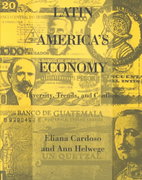Question
The Coronavirus Disease 2019 (COVID-19) was first reported to the World Health Organization (WHO) on 31 December 2019 following a pneumonia of unknown cause was
The Coronavirus Disease 2019 (COVID-19) was first reported to the World Health Organization (WHO) on 31 December 2019 following a pneumonia of unknown cause was detected in Wuhan, China. Then weeks later, the WHO characterized COVID-19 as a pandemic (on 11 March 2020) when the number of cases reached 118,000 in 114 countries and 4,291 people lost their lives due to the outbreak. The consequences of the outbreak have gone far beyond the spread of the disease. Governments and business owners are raising concerns about possible disruptions to the global supply chains due to COVID-19. Schools have been closed and the number of children, youth and adults not attending schools or universities is soaring. International travel, tourism, sport and entertainment industries are hit hard by the outbreak. As part of a strategy to reduce the spread of COVID-19, authorities have decided to increase taxes on cigarettes and other smoking products. Making reference to relevant microeconomic models you have learnt in Microeconomics 2A, explain the likely impact on equilibrium prices, quantity, government revenue and well-being of consumers and producers of this measure. Use your results to discuss the merits of this policy, considering the principles of equity and efficiency.
Step by Step Solution
There are 3 Steps involved in it
Step: 1

Get Instant Access to Expert-Tailored Solutions
See step-by-step solutions with expert insights and AI powered tools for academic success
Step: 2

Step: 3

Ace Your Homework with AI
Get the answers you need in no time with our AI-driven, step-by-step assistance
Get Started


